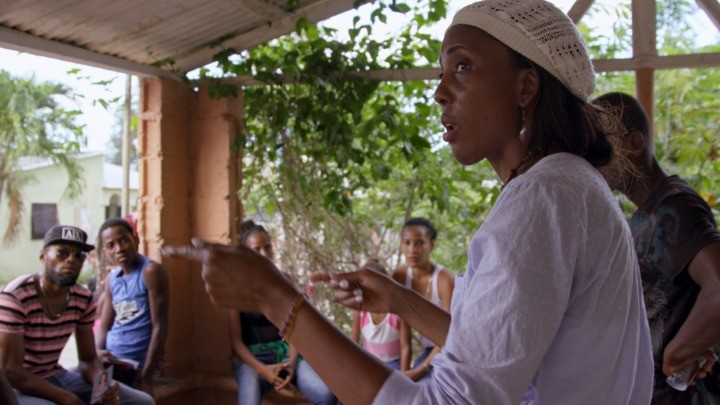The film shows ways in which Anti-Blackness is a global pandemic

As communities across the world contend with anti-Black racism, Canadian director Michèle Stephenson – who is of Panamanian and Haitian ancestry – bravely illuminates the stories of Haitian Dominicans impacted by this racism in her award-winning documentary Stateless.
Stateless was the recipient of the Special Jury Prize — Canadian Feature. The documentary premiered online at the DOXA Documentary Film Festival in June. If you missed the opportunity to watch this documentary last month, the National Film Board of Canada plans to release Stateless, next year.
The documentary begins by narrating the story of Moraime. Moraime is a young Haitian who found herself displaced amid the 1937 anti-Haitian massacre which was ordered by Dictator Rafael Trujillo, whose intention was to “whiten the Dominican population.” Currently, tens of thousands of children of Haitian descent continue to face threats of violence. Like Moraime, their fear is justified, because they have once again become stateless.
<suggested addition: Fast forward 80 years to 2013 and Haitian people are still facing discrimination in the Dominican Republic. 2013 Supreme Court decision that stripped nearly 200 000 people of Haitian descent of their citizenship . The decision retroactively impacted those with Haitian ancestry going as far back as 1929.
Rosa Iris Diendomi Álvarez— a young human rights attorney of Haitian descent — who is on a mission to help her community challenge that court decision. Moreover, Iris explains that Dominicans with Haitian ancestry are also prevented from getting their Haitian nationality leaving them in a “legal labyrinth.”
“Not very many people think of the Dominican Republic as an oppressive country,” Stephenson said in an interview with the Martlet. She calls the court’s decision, “legalistic BS” but argues that the decision goes against the Dominican Republic’s constitution.
“[The] Constitution … [if] you’re born on the territory, you’re [a] citizen of that land. It’s not by blood, it is by birth.”
But Stephenson points out that Haitians were brought to the Dominican Republic to work in the cane fields.
“The Dominican government made a contractual agreement with the Haitian government and actually paid them to ship the Haitians to the Dominican Republic … what we are looking at is the children of those migrants — those migrants have made a life for themselves there. They are not transient…it’s really more of an issue of the Dominican Republic refusing to recognize their status that has had a ripple effect on the children of these migrants.”
Conversely, the film also introduces Gladys Feliz-Pimental, a member of the Dominican Nationalist Movement. She claims the Haitians are responsible for the violence plaguing the Dominican Republic. She is working to convince the government to build a wall to prevent Haitian migrants from coming into the country.
The “us versus them” narrative constructed by Dominicans is troubling, particularly because the countries share a colonial history, physically share the island of Hispaniola, and because the border between the Dominican Republic and Haiti is described as “porous.”
Stephenson adds that white supremacy is not beholden to borders.
“The pressure of white supremacy, it doesn’t know boundaries, it doesn’t know borders. And so neither should the movement for Black lives know borders”.
Although Diendomi Álvarez tries to help her community, audiences learn at the end of the film that like Moraime, Iris was also forced to flee. Because of the threats to her and her son’s life, Iris — who was fighting for a seat in the Dominican Congress — applied for and was granted refuge in the United States. She is currently working with Stephenson to use the film as an opportunity to educate and engage community groups and international organizations about anti-Black racism and migration.
Although the film specifically illuminates anti-Black racism and violence in the Dominican Republic, contemporary North America, like much of the Americas, was created and built from colonial anti-Black sentiments and systemic racism. The exclusion of Black lives from North American nations, which was built from Black lives, continues to impact Black lives. Thus, historical context is imperative in understanding why anti-Black racism continues to be prevalent in the Americas. But it also provokes me to ask: Who is responsible for the anti-Black racism in the Domican Republic? And does our own anti-Black racism and violence, also leave Black North Americans stateless?
Although this is an especially interesting film right now, given the growth of the Black Lives Matter movement, I worry for Iris and her son. Although they managed to successfully escape anti-Black racism and violence in the DR, I wonder about the anti-Black racism and violence that exists in North America, that has also left millions of Black Americans, stateless.








